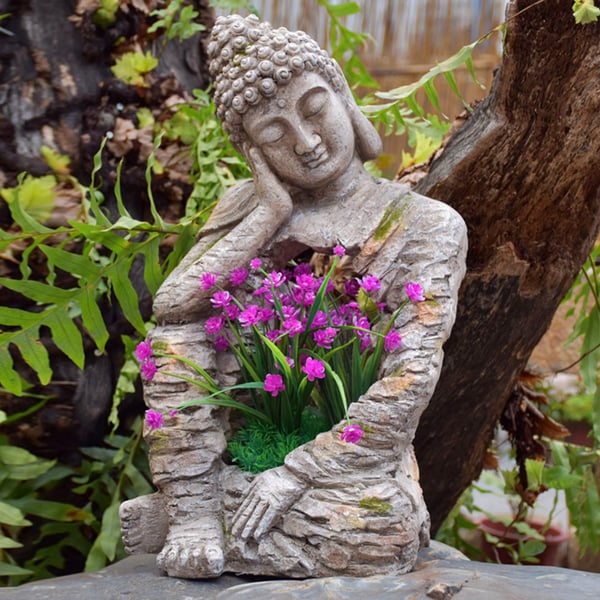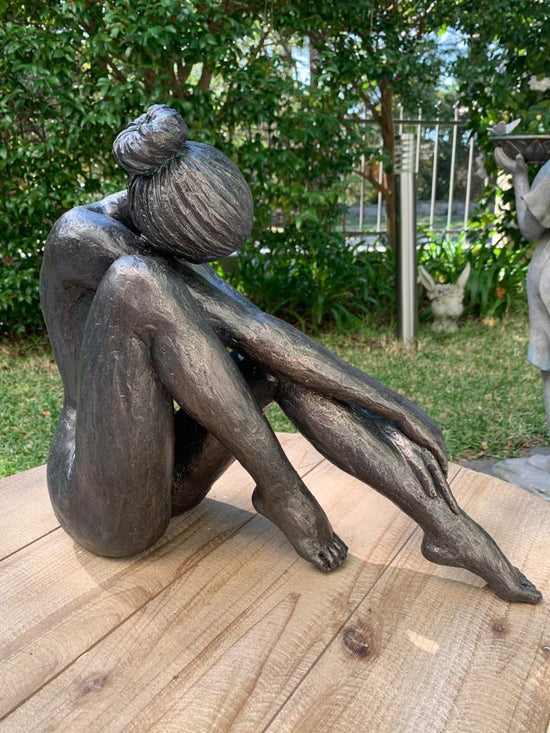
Throughout history, outdoor statues have stood as silent sentinels, capturing the essence of cultures, beliefs, and the human spirit. From towering monuments to delicate garden sculptures, these timeless artworks serve as testaments to creativity, history, and symbolism. The allure of outdoor statues lies not just in their aesthetic appeal but also in the stories they tell and the emotions they evoke. This article delves into the multifaceted world of outdoor statues, exploring their historical significance, cultural impact, artistic expressions, and their enduring relevance in contemporary society.
Outdoor statues are artistic expressions crafted to adorn exterior spaces, offering a blend of beauty, symbolism, and cultural significance. These sculptures, often made from materials like stone, marble, bronze, or modern elements, stand as enduring testaments to human creativity. Ranging from ancient monuments that narrate historical events and celebrate revered figures to contemporary abstract forms that provoke thought, outdoor statues grace public parks, city squares, and gardens, enriching the surrounding environment with their visual appeal and storytelling. These statues not only beautify the landscape but also serve as focal points for community identity and cultural pride, encouraging reflection, dialogue, and emotional connections with the shared stories they represent. Their timeless presence invites observers to engage with art in a tangible, physical way, fostering a deeper appreciation for history, art, and the human experience.
Historical Significance and Evolution
Outdoor statues trace their lineage back to ancient civilizations. From the imposing monuments of ancient Egypt to the grandeur of Greek and Roman sculptures, these early statues were often crafted in reverence to gods, heroes, and rulers. The skill and artistry evident in these historical works continue to inspire awe.
The Renaissance era witnessed a revival in the creation of outdoor sculptures, exemplified by the works of Michelangelo and Donatello, among others. These masterpieces depicted human forms with unprecedented realism and emotion, setting new standards in artistic expression.
In modern times, outdoor statues have evolved to encompass a broader range of subjects and styles. Sculptors now explore abstract, contemporary, and minimalist forms, reflecting diverse themes and interpretations. Public spaces and private gardens alike are adorned with statues that not only beautify but also provoke thought and introspection.
/product/45/8792722/1.jpg?5455)
Cultural Impact and Symbolism
Outdoor statues serve as cultural symbols, representing shared values, beliefs, and historical narratives. In various cultures, statues commemorate significant events, honor revered figures, or encapsulate collective ideologies. For instance, the Statue of Liberty in the United States stands as an enduring symbol of freedom and democracy, while the Great Buddha of Kamakura in Japan embodies peace and enlightenment.
Moreover, statues often act as focal points for community identity. They adorn city squares, parks, and landmarks, becoming landmarks themselves. These sculptures foster a sense of place and pride, connecting people to their heritage and shared stories.
Artistic Expression and Techniques
The creation of an outdoor statue is a meticulous and intricate process that demands technical skill, artistic vision, and a profound understanding of materials. Sculptors employ various materials such as marble, bronze, stone, and even modern elements like stainless steel or recycled materials. Each material offers distinct challenges and opportunities for expression.
Sculpting techniques vary widely, from traditional hand carving to modern methods involving technology like 3D printing and laser cutting. The process often begins with sketches and maquettes, progressing to the actual carving or casting, and finally, the finishing touches that bring the statue to life.
Enduring Relevance in Contemporary Society
Despite the ever-changing artistic landscape, outdoor statues continue to hold a significant place in contemporary society. Beyond their aesthetic value, they serve as catalysts for dialogue, sparking discussions on culture, history, and societal issues. Public art installations challenge perceptions, provoke thought, and contribute to the vibrancy of urban spaces.
Furthermore, in the digital age, outdoor statues offer a tangible and visceral experience that contrasts with the virtual world. They invite touch, engagement, and a shared physical presence, creating memorable and emotional connections for individuals and communities.

Frequently Asked Questions (FAQ)
What is an outdoor sculpture?
An outdoor sculpture refers to any three-dimensional artwork created for placement in exterior spaces. These sculptures are designed to withstand outdoor elements and can range from monumental public art installations in city squares to smaller pieces found in gardens or parks. They can be made of various materials like stone, metal, wood, or other durable substances.
What can I use for outdoor sculpture?
Several materials are commonly used for outdoor sculptures due to their durability and ability to withstand outdoor conditions. These include:
- Bronze: Known for its longevity and resistance to weathering.
- Stone: Marble, granite, and limestone are popular choices due to their endurance and natural beauty.
- Metal: Stainless steel, iron, and copper can be used, often appreciated for their contemporary aesthetic.
- Resin or Fiberglass: These materials can be cost-effective and are relatively weather-resistant.
- Wood: Certain types of wood, especially those treated or naturally resistant to decay, can be used for outdoor sculptures.
What is a garden statue called?
A statue specifically designed for placement in gardens is commonly referred to as a "garden statue" or a "garden sculpture." These statues are often smaller in scale compared to large public monuments and are tailored for enhancing the beauty and aesthetic appeal of gardens, parks, or outdoor landscapes.
Can you put statues outside?
Yes, statues can be placed outside. However, it's essential to consider the choice of material and the sculpture's design to ensure it can withstand outdoor conditions such as rain, wind, sun exposure, and temperature changes. Materials like bronze, stone, and certain types of treated wood or metals are commonly used for outdoor sculptures due to their durability. Proper maintenance and occasional cleaning may also be necessary to preserve the appearance and structural integrity of outdoor statues over time.
Advantages of Outdoor Statues
- Cultural Enrichment: Outdoor statues contribute to cultural enrichment by preserving and celebrating historical events, figures, and shared values. They serve as visual reminders of a community's heritage, fostering a sense of pride and identity.
- Beautification of Spaces: These sculptures enhance the aesthetic appeal of public areas, gardens, and cityscapes, adding artistic value to the environment. They transform mundane spaces into engaging and visually captivating areas.
- Symbolism and Storytelling: Outdoor statues often tell stories or convey symbolic meanings. They serve as visual narratives, sparking curiosity and engaging viewers in contemplation, discussion, and interpretation of the depicted themes.
- Community Engagement: They act as focal points, drawing people together, and often becoming meeting places or landmarks. Statues encourage social interaction and serve as a point of interest for locals and tourists alike.
- Cultural Tourism: Significant statues attract tourists and contribute to cultural tourism. They become landmarks of interest, encouraging visitors to explore and learn about the culture and history of a place.
Disadvantages of Outdoor Statues
- Maintenance and Preservation: Statues exposed to outdoor elements require regular maintenance to preserve their aesthetic appeal. Weather, pollution, and vandalism can damage the sculptures, necessitating ongoing care and restoration efforts.
- Controversy and Interpretation: Some statues might depict themes or historical figures that are controversial or open to diverse interpretations. This can lead to public debate or discomfort among certain groups within a community.
- Cost and Space: Creating and installing outdoor statues can be expensive. Additionally, allocating space for these structures in crowded urban areas might be challenging and can conflict with other land-use priorities.
- Vandalism and Theft: Unfortunately, outdoor statues are sometimes targets for vandalism or theft. They can be defaced, damaged, or stolen, resulting in the loss of cultural and artistic heritage.
- Static Representation: Some statues may lack dynamism or the ability to evolve with changing societal values and cultural shifts, leading to a perceived disconnect from contemporary perspectives.

Functions of Outdoor Statues
- Cultural Representation and Commemoration: Outdoor statues serve as representations of cultural identity, commemorating historical figures, events, or values significant to a community. They honor heroes, leaders, or pivotal moments, preserving their memory for future generations.
- Public Art and Aesthetic Enhancement: These sculptures contribute to public art, enriching the visual landscape of cities, parks, and public spaces. They provide aesthetic pleasure, enhancing the ambiance and attractiveness of the surroundings.
- Education and Historical Documentation: Outdoor statues act as educational tools, offering a tangible connection to history. They provide an opportunity for viewers to learn about significant historical periods, individuals, or events, fostering a greater understanding of the past.
- Civic Engagement and Community Identity: Statues often become gathering points or landmarks, fostering a sense of community identity. They can serve as focal points for events, rallies, or celebrations, bringing people together and instilling local pride.
- Symbolism and Inspiration: These sculptures convey symbolic meanings, inspiring introspection, dialogue, and contemplation. They can embody ideals such as liberty, justice, peace, or progress, serving as a source of inspiration for individuals and communities.
- Tourism and Economic Impact: Iconic statues attract tourists, contributing to cultural tourism and generating economic benefits for the local area. They become significant landmarks, drawing visitors who spend on accommodations, dining, and local businesses.
- Healing and Commemoration: In certain contexts, outdoor statues in memorial parks or spaces dedicated to specific events serve as places of healing and remembrance. They provide solace and reflection for individuals impacted by tragedy or loss.
- Environmental Interaction and Engagement: Statues placed in outdoor environments create a unique relationship with nature, enhancing the appreciation of art through an interplay with the surrounding landscape.
Outdoor statues are not merely inert figures in stone or metal; they are repositories of stories, conduits of cultural expression, and testaments to human creativity. Their ability to transcend time, communicate across generations, and provoke contemplation cements their significance in the artistic, cultural, and societal realms. As we continue to admire and create these sculptures, we perpetuate a tradition that speaks volumes about our past, present, and our collective aspirations for the future. In their permanence, outdoor statues invite us to pause, reflect, and find inspiration in the enduring beauty and symbolism they hold.
NEWS
- Enhancing Outdoor Spaces: The Art of Outdoor Ornamentation
- Maximizing Efficiency and Power: The Evolution of Outdoor Power Tools
- The Timeless Allure of Outdoor Statues: A Reverence in Stone
- Unveiling the Top 5 Ecommerce Problems in Nigeria and How to Overcome Them
- Top 20 Profitable Business Ideas Nigerians Are Searching For.
- Is Love a Transaction? Exploring the Dynamics of Love and Relationships
- Shopum Launching on the 17th of April 2024: Unlocking the Future of Online Shopping: Introducing Shopum's Revolutionary Features
- Download Shopum and Shopum Earn Apps
